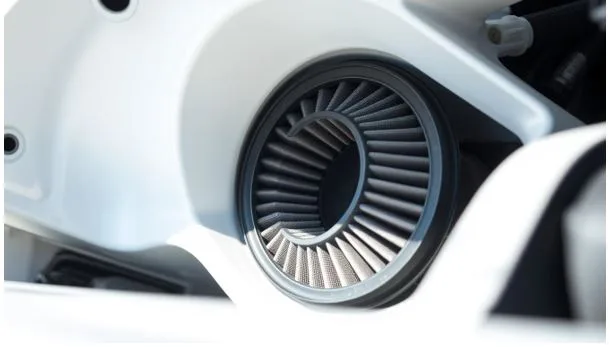What does a Car Air Filter do in our vehicle?
Here’s a sobering thought: 92% of mechanics report finding dangerously clogged filtration systems during routine checks. That’s like discovering your local pub’s bouncer’s been napping while gatecrashers trash the place. Our engines deserve better security than that.
This unsung hero in our motor’s ecosystem works harder than a caffeinated border collie. It sifts through every breath our combustion chambers take, blocking contaminants with the precision of a Michelin-starred sommelier rejecting corked wine. From pollen to particulates, nothing dodgy gets past its defences.
Choosing the right guardian matters more than most realise. Modern units come in everything from pleated paper to layered cotton, each affecting airflow like different straw widths in a milkshake challenge. Get it wrong, and your vehicle might start guzzling fuel like a student downs energy drinks during exams.
Neglect this component, and you’re essentially forcing your motor to breathe through a dirty sock. Performance plummets faster than a politician’s approval ratings after a scandal. Regular maintenance keeps everything running smoother than a perfectly poured pint.
Key Takeaways
- Acts as critical defence against engine-damaging particles
- Material choice directly impacts fuel efficiency and power
- Clogged units can reduce MPG by up to 10%
- Modern designs balance airflow with filtration precision
- Visual checks should form part of routine maintenance
- Replacement intervals vary by driving conditions
Understanding the Car air filter and Its Impact on Engine Performance
Imagine your engine trying to inhale through a straw clogged with biscuit crumbs. That’s essentially what happens when our vehicle’s guardian against grime gets overwhelmed. This component acts as both bouncer and biochemist, scrutinising every oxygen molecule before granting entry to the combustion party.
The Microscopic Nightclub Security
Modern filtration systems employ clever origami-like pleating – imagine folding an A4 sheet 50 times until it could trap a football pitch worth of dust. This design lets engines gulp clean air while leaving uninvited guests (pollen, road grit, that crisp packet from the M25) stuck in the velvet rope queue.
When functioning properly, it’s like having a hyper-vigilant tea strainer. Only the good stuff gets through. Abrasive particles meet their demise here, sparing internal components from becoming a metal smoothie. Mechanics report engines with clean filters sound “happier” – though we’ve yet to hear one whistle.
Fuel Savings and Long-Term Gains
A well-maintained unit helps achieve the Goldilocks zone of air-fuel mixtures. Too restricted, and our motor chugs petrol like a fresher at their first pub crawl. Too porous, and it’s all air, no action – like trying to light a barbecue in a hurricane.
- Reduces fuel consumption by maintaining optimal combustion
- Prevents £500 repair bills by stopping particle abrasion
- Lowers emissions (good for both MOT tests and neighbourly relations)
Neglect this, and we’ll soon recognise that ominous rattling – the automotive equivalent of a death rattle. Regular checks keep everything purring like a contented cat, minus the hairballs.
Exploring the Different Types of Air Filters
Let’s cut through the smog of confusion surrounding engine guardians. Three main contenders dominate this arena, each with quirks that’d make even the most stoic mechanic raise an eyebrow. Choosing between them is like picking a dating app profile – swipe right for convenience, left for high maintenance.
Paper, Cotton and Foam Options Explained
Paper units are the disposable heroes of this story – cheaper than a takeaway curry but as reusable as a soggy tissue. Their pleated design traps grime effectively, perfect for drivers who prefer ‘fit and forget’ solutions. Just don’t expect them to survive the MOT test twice.
Cotton alternatives play the posh cousin role. Layered like a fancy trifle, these reusable options demand regular spa treatments (read: cleaning and re-oiling). Ideal for performance enthusiasts who’d rather polish components than watch the footie.
Foam versions? Think Bear Grylls of the filtration world. Their thirsty polyurethane structure guzzles dust in off-road conditions, though airflow suffers like a marathon runner breathing through a straw. Brilliant for farm vehicles, less so for city runabouts.
Oiled Versus Dry Filters: Which One Suits Us?
Oiled options work like spider webs dipped in treacle – brilliantly sticky for trapping nasties while letting oxygen flow freely. They’ll have your engine purring like a contented cat, provided you enjoy monthly maintenance rituals.
Dry counterparts offer simpler care – shake out the dirt and carry on. But they’re about as effective at fine filtration as a colander during a rainstorm. Choose based on whether you prioritise performance gains or weekend freedom.
Remember: mismatching types to driving conditions is like wearing wellies to a Wimbledon final. Get it right, and you’ll save both time and money. Get it wrong? Prepare for that ominous rattling sound…
Air Filter Shapes and Their Effect on Overall Car Performance
What do origami and our vehicle’s lungs have in common? Both rely on clever folding techniques to maximise efficiency. The geometry of these components plays a surprising role in how our motor gulps oxygen – get it wrong, and we might as well attach a hairdryer to the intake.
Panel and Cone Shapes – What Do They Mean for Airflow?
Panel units are the sensible cardigans of the filtration world. Nestled discreetly in factory housings, their pleated design works like a concertinaed A4 pad – increasing surface area without demanding attention. Swapping to cotton versions gives marginally better airflow, like upgrading from a tea strainer to a proper sieve.
Cone-shaped alternatives are the extroverts here. Their spiralling form resembles something NASA might bolt onto a rover, promising enough oxygen to make our hatchback hyperventilate. While they do offer 15-20% more airflow, the real question is: does your weekly school run require Formula 1-level breathing apparatus?
Design Choices and Their Practical Impacts
That space-age cone isn’t just for show. The inverted central funnel acts like a turbocharged motorway slip road, guiding air molecules into orderly lanes. More surface area means less congestion in the intake – brilliant until you realise it’s now wedged where the spare tyre used to live.
Here’s the rub: performance gains come with compromises. That sleek aluminium cone might impress at the car park meet-up, but it’ll also amplify engine noise like a kazoo in a library. Stick with panel designs if you value peaceful commutes over pit-stop bragging rights.
- Panel filters maintain factory aesthetics (and insurance sanity)
- Cones require custom housings – say goodbye to glovebox space
- Surface area improvements follow the law of diminishing returns
Ultimately, choosing between shapes is like picking shoes – flashy trainers might look cool, but sensible brogues won’t blister your feet during the daily grind.
Proper Maintenance and Replacement for Optimal Car Health
Think of your engine’s air filter as a gym membership – useless unless you actually show up. Our motors demand more attention than a Tamagotchi, yet we often treat them like indestructible kitchen appliances. Let’s change that.
Cleaning Rituals and Replacement Realities
Reusable units require the care of a prized houseplant. Cotton versions need monthly baths with specialist shampoo – ordinary detergent works like a bull in a china shop. Remember: oiling afterwards should resemble seasoning chips, not drowning them in vinegar.
Paper guardians aren’t built for second chances. Trying to clean them is like reheating fish and chips – technically possible, but everyone regrets it. Stick to the manual’s replacement schedule unless you fancy explaining odd noises to your mechanic.
Economical Care Without Compromise
Top tip: mark replacement dates on your calendar alongside dental check-ups. Both prevent expensive, painful consequences. For reusable types, invest in proper cleaning kits – they cost less than a pub lunch and save £££ long-term.
Spotting trouble early beats breakdown dramas. If acceleration feels like pushing a sofa uphill or fuel economy rivals a steam train, your component’s crying for help. Regular checks take less time than queuing for a latte.
Ultimately, smart care boils down to common sense. Choose routines matching your skillset – there’s no shame in paying a pro. Just don’t ignore it completely, unless you enjoy funding your garage’s summer holiday.
Wrapping Up Our Air Filter Buying Guide
It turns out, the secret to a happy engine isn’t rocket science—it’s filtration. We’ve graduated from thinking these components were glorified paper fans to understanding their role as microscopic bouncers for our motors. Whether you’re navigating city smog or country lanes, the right choice balances airflow with particle-blocking prowess.
Remember: selecting between cotton, foam, or paper options is like choosing hiking boots. Match them to your terrain. Performance enthusiasts might prioritise reusable units needing TLC, while busy drivers could opt for ‘fit-and-forget’ solutions. Just don’t pull a desert holiday/winter tyres mismatch.
Trusted brands like K&N or Mahle have earned their stripes through decades of keeping engines purring. Skimping here is like hiring a mechanic who operates from a garden shed—occasionally genius, often catastrophic. Regular checks prevent that ominous “death rattle” soundtrack and keep fuel bills lighter than a soufflé.
Now we’ve got the knowledge, let’s use it. Your motor’s longevity depends on this humble hero. Keep it clean, choose wisely, and enjoy smoother journeys ahead. After all, nobody wants their daily commute to sound like a bag of spanners in a washing machine.





